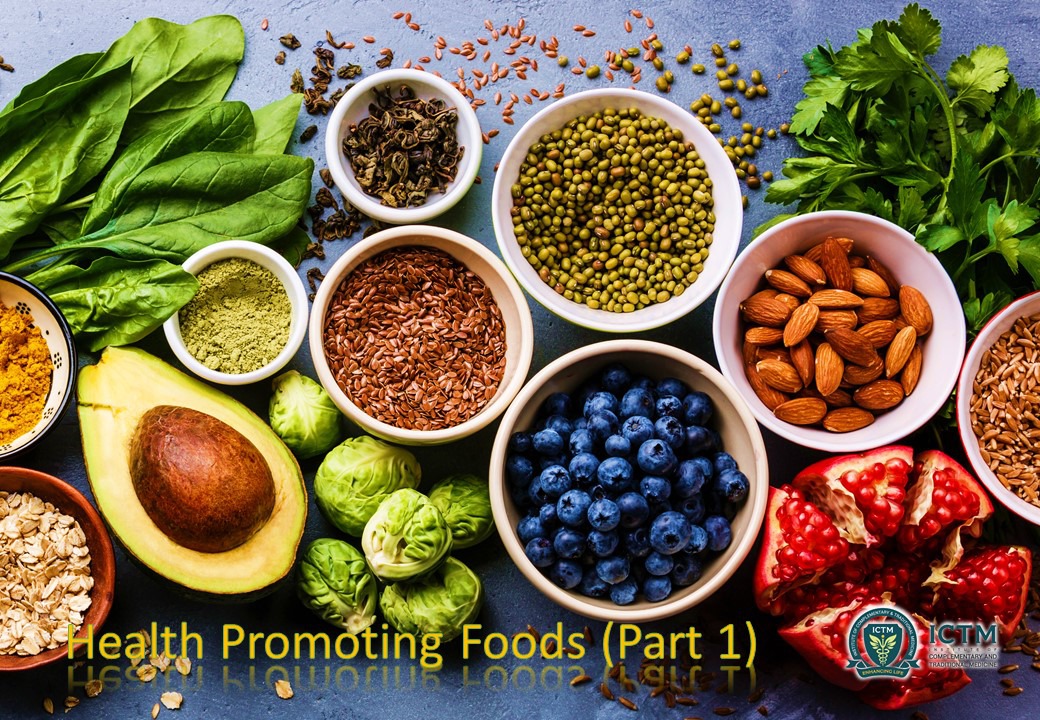Is Aromatherapy combined with Traditional Chinese Medicine a good match?
MSc (EB Med) (Oxon), MS (Metab Med) (USF), DMedSc (UCG), FIC

MSc (EB Med) (Oxon), MS (Metab Med) (USF), DMedSc (UCG), FICT, FAARFM, FNFMP
President, Association of Nutritional & Functional Medicine Practitioners, Malaysia;
President, Federation of Complementary & Natural Medical Associations of Malaysia; Adjunct Professor, School of Science, Engineering & Agrotechnology, University College Yayasan Pahang.
“HEALTH PROMOTING FOODS: FACTS & MYTHS”
When you’re healthy, eating a meal that you’ve chosen is itself a joyful experience. Are there really foods or cooking ingredients that can improve our brain chemistry leading to joy, happiness, and contentment? Do foods make a positive health impact on our body chemistry? Essentially, joy and happiness are manifestations of our mental and physical conditions depending on our attitudes and levels of self-esteem. This discussion covers some of the health facts and myths of common food/beverages.
Sardines
They are rich in both vitamin D and omega-3 fatty acids. Both of these nutrients are known to overcome one’s minor depressive disorder. Low vitamin D levels have been linked to depression around the globe [1, 2]. Some studies have linked its deficiency to other mental health problems such as personality disorders and post-traumatic stress disorder.
Consequently, eating food rich in vitamin D can make people happier [3]. Milk also contains some vitamin D, but milk products aren’t rated as a health food in nutritional/functional medicine due to its link to various metabolic disorders.
Oysters
These are probably the richest source of the trace mineral zinc, which deficiency can cause numerous health disorders such as low immunity [4], low enzyme activities, depression (especially for women), poor wound healing, low testosterone (for men), loss of taste for food, and higher risk of prostate growth (for men). Unfortunately, besides contamination by polluted waters this seafood is rather acidic and should be consumed in moderation.
Ikan bilis (anchovy)
In its dried form, minus its head and stomach, ikan bilis contains more than twice as much protein (and much more calcium) than lean beef, lamb or mutton. In addition, it’s rich in health-promoting omega-3 fatty acids (if unfried). Quality protein is needed by our body in numerous ways including generating its estimated 5,000 bodily enzymes plus antibodies, blood cells, muscles, tissues, tendons, collagen, hormones, and even our skeletal structure. Fortunately, our protein doesn’t necessarily have to come from meat, fish, livestock, or wild game.
Soy protein isolate
Soy isolate contains high quality protein comparable to egg white, which is considered the highest quality besides human breast milk. Besides, soy isolate is rich in isoflavones which help maintain moisture in skin collagen giving it a more vibrant look. Isoflavones are being added to expensive cosmetics too. The plant estrogen in soy is one-hundred thousandth the strength of estradiol (female hormone) and for decades being considered as tumor/cancer protective [5]. The digestibility values of steamed soybeans, full-fat soy flour, defatted soy flour, tofu and soy protein isolate are 65, 75 to 92, 84 to 90, 93 and 93 to 97 percent respectively [6]. The high digestibility of soy isolate products contributes to its overall high quality PDCAAS score, which is the official method for scoring protein quality used by
WHO. Since canned, baked beans are widely consumed in the West and tofu widely consumed in the East, soy products are vegetarians’ favourite meat substitute. There’s concern in the West on soy products lowering one’s metabolism. This effect can be neutralised by intake of seaweed.
Mackerel and cod
These are common seafood richest in omega-3 fatty acid, which active ingredients EPA and DHA are great for fighting chronic inflammation and for enhancing our memory respectively. Contrary to popular belief, farmed salmon (with orange-coloured flesh) which is widely served in restaurants can be harmful to our heart since it’s high in the easily oxidized and proinflammatory omega-6 fats, besides chemicals used in the farming. Organic (wild) salmon flesh is pink or red in colour.
Eel
This fish is very high in the micro-mineral iron. For growing children and women having menstrual cycles and without bone marrow damage, iron helps generate more of the needed red blood cells to overcome anaemia and tiredness. However, excess iron or elevated serum ferritin in men can lead to much higher risk of atherosclerosis and cellular damage as compared to elevated total cholesterol. The higher his iron/ferritin levels the higher is his oxidative stress, unless neutralised by adequate intake of relevant antioxidants or regular blood donation [7].
Seaweeds
These could be added to soups or be mixed with other vegetable dishes. They’re very rich in iodine which rejuvenates the thyroid gland for higher metabolism. However, those suffering from hyperthyroidism (producing excessive amount of thyroid hormones) should avoid kelp and seaweeds, which are also rich in the amino acid L-tryphophan for promoting better quality sleep. When our body is deprived of sleep, our level of appetite-suppressing hormone leptin is decreased while our weight gaining hormone GHrelin is increased [8].
Estrogen-balancing spices
Research shows that natural polyphenols found in the spice Rosemary have strong anticarcinogenic properties. Rosemary extract can prevent carcinogens from binding to and possibly mutating our cellular DNA. Cruciferous vegetables such as broccoli, cabbages, and Brussels sprouts contain phytonutrients such as indole-3-carbinol that helps create a noncancerous pathway for our oestrogen (E2) metabolism.
This article is to be continued under Part 2.
Note: References for this article are available upon request only from candidates doing training courses with the ICTM. This Article may not be reproduced without written permission from the author.